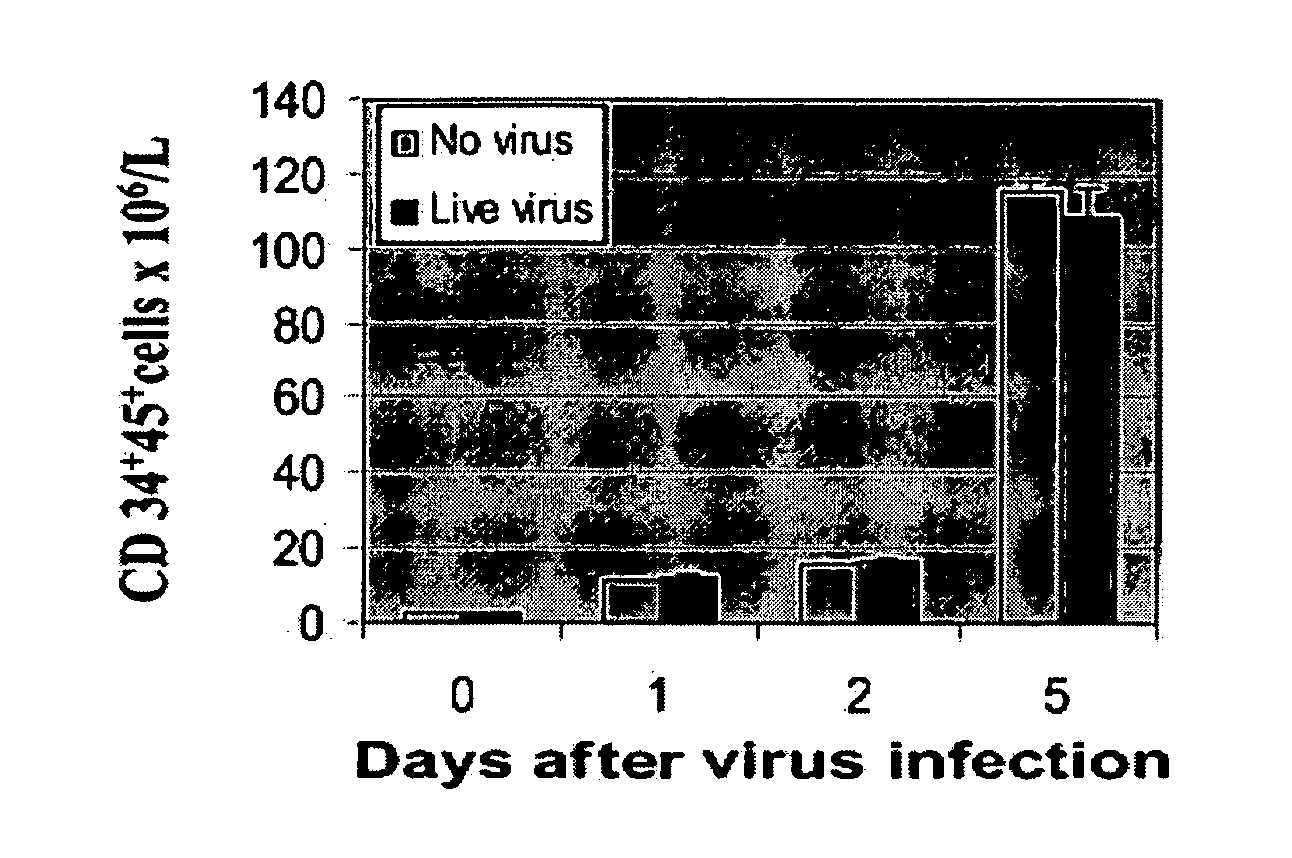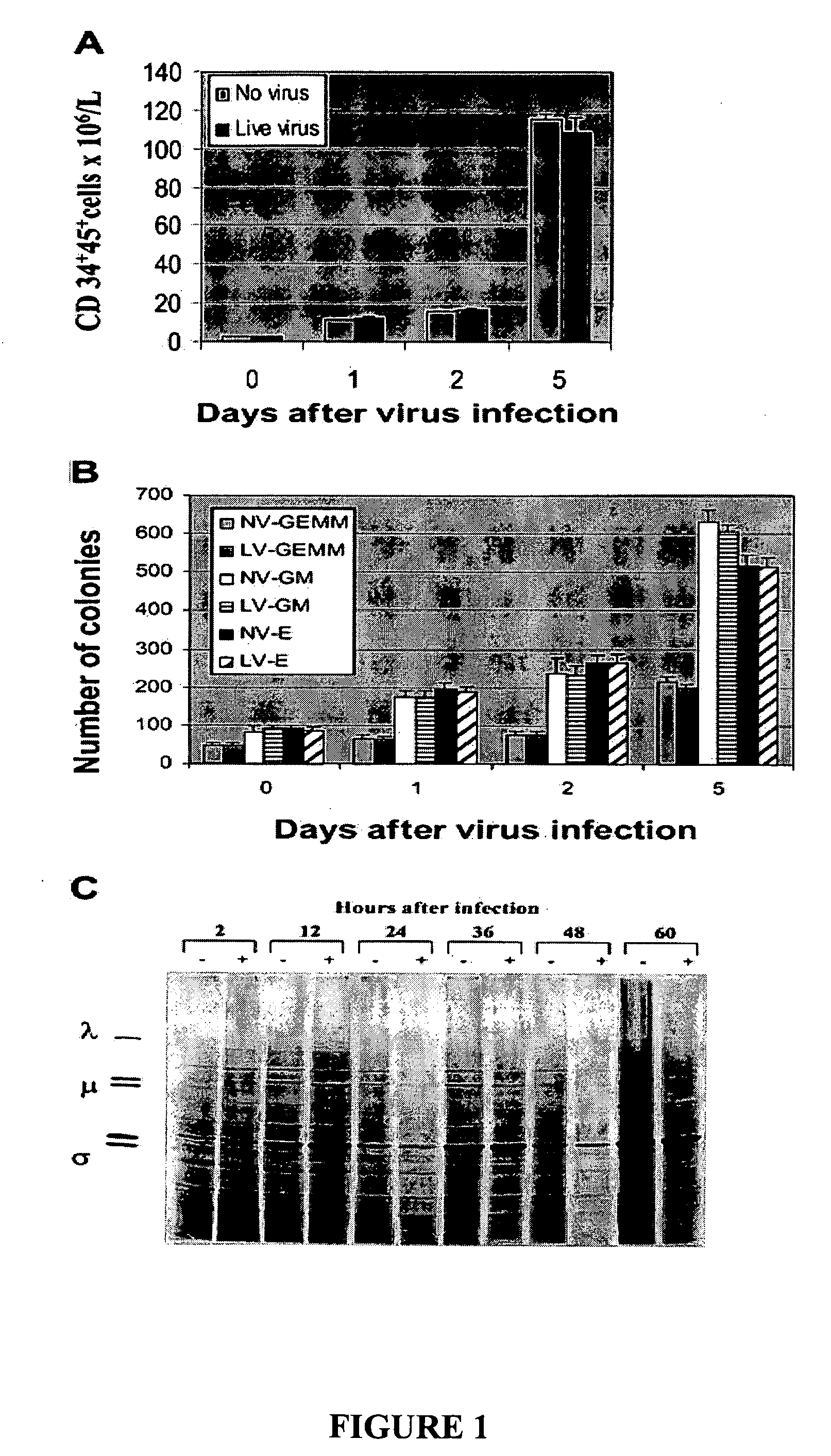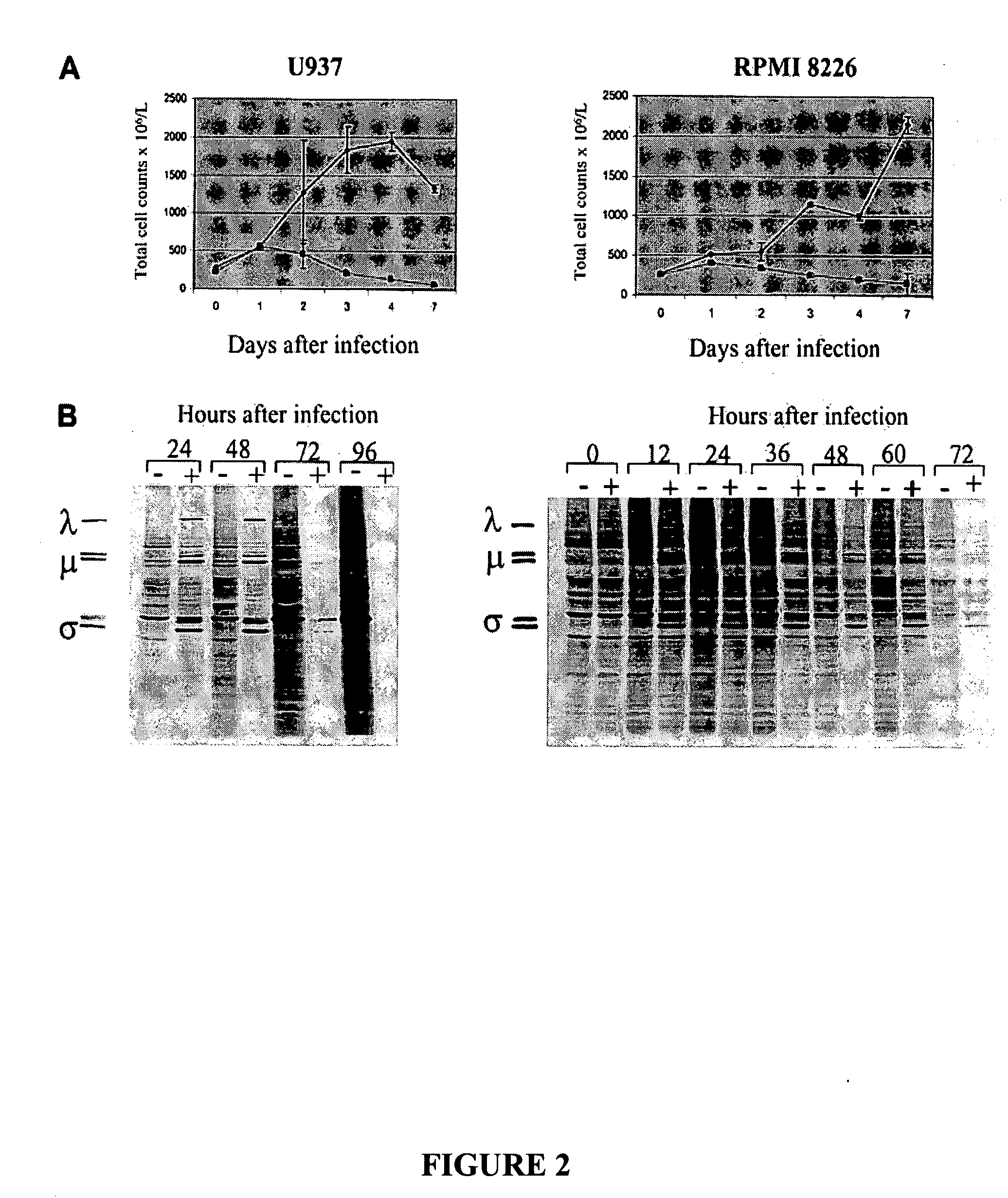Combination of transplantation and oncolytic virus treatment
a technology of oncolytic virus and transplantation, which is applied in the field of virus pretreatment, can solve the problems of unable to achieve 100% success in depleting tumor cells in clinical setting, and unable to achieve 100% success in reducing the patient's resistance to viral infections, etc., to achieve the effect of assessing the cytopathic
- Summary
- Abstract
- Description
- Claims
- Application Information
AI Technical Summary
Benefits of technology
Problems solved by technology
Method used
Image
Examples
example 1
Reovirus Does Not Affect Hematopoietic Progenitors
[0230] To investigate whether reovirus would affect the number and function of stem cells, positively selected (CD34+) stem cells were challenged with reovirus at an MOI of 40 and cultured in StemSpan medium for 5 days. As shown in FIG. 1A the number of CD34+CD45+ cells significantly increased with prolonged incubation and, at day 5, were 80-fold higher than at the start of the experiment. No significant difference between virus-treated and untreated stem cells was detected.
[0231] The preservation of the clonogenic potential of virus-treated and untreated hematopoietic progenitors was determined by culturing CD34+-enriched stem cells in StemSpan medium plated in methylcellulose medium. CFU-GMs, BFU-Es, and CFU-GEMMs were counted after 14 days of incubation. As shown in FIG. 1B, no differences in the clonogenic capacity of the stem cells was detected in virus-treated or untreated stem cells.
[0232] To confirm that reovirus does not ...
example 2
Flow Cytometric Analysis and [35S]-Methionine Labeling of Malignant Cell Lines
[0233] The susceptibility of established monocytic and myeloma cell lines to reovirus infection was tested by culturing U937 and RPMI 8226 cells in the presence (40 MOI) or absence of reovirus.
[0234] To confirm the cytopathic effect of reovirus on these cell lines samples of the cultured cells were obtained at days 0, 1, 2, 3, 4, and 7 days after virus infection and were analyzed for intact cell counts using propidium iodide. As shown in FIG. 2A, cell numbers declined after virus infection, contrasting the increase in uninfected cells. These results were confirmed over multiple experiments, and the cell counts approached zero by day 7. Residual cells seen at day 7 in FIG. 2A (left and right panels) are due to the fact that flow cytometry still counts membrane-intact but dying cells.
[0235] Replication of reovirus in susceptible cell lines was further confirmed by metabolic labeling with [35S]-methionine ...
example 3
Purging of Monocytic and Myeloma Cancer Cells in Apheresis Product
[0236] The results in Example 1 prove that exposure of hematopoietic stem cells to reovirus does not affect CD34+CD45+ cell counts or colony-forming potential of the hematopoietic progenitor cells in vitro. The monocytic and myeloma cancer cells were then mixed with apheresis product cells to result in tumor burdens of 1%, 0.1%, and 0.01% and purged with reovirus for 3 days. The purging efficacy of reovirus was evaluated using two different techniques: flow cytometry and cancer cell outgrowth following purging.
[0237] As depicted in FIG. 3Ai and 3Bi, reovirus treatment and purging for 3 days resulted in significant purging of U937 cells and complete purging at 0.01% contamination. When purged and unpurged admixed samples were recultured in RPMI medium for 6 days, no tumor regrowth was detected in the 0.1% and 0.01% contaminated samples (FIG. 3Ci). In contrast, U937 cell outgrowth was detected in all reovirus untreate...
PUM
| Property | Measurement | Unit |
|---|---|---|
| density | aaaaa | aaaaa |
| cellular composition | aaaaa | aaaaa |
| refractory | aaaaa | aaaaa |
Abstract
Description
Claims
Application Information
 Login to View More
Login to View More - R&D
- Intellectual Property
- Life Sciences
- Materials
- Tech Scout
- Unparalleled Data Quality
- Higher Quality Content
- 60% Fewer Hallucinations
Browse by: Latest US Patents, China's latest patents, Technical Efficacy Thesaurus, Application Domain, Technology Topic, Popular Technical Reports.
© 2025 PatSnap. All rights reserved.Legal|Privacy policy|Modern Slavery Act Transparency Statement|Sitemap|About US| Contact US: help@patsnap.com



